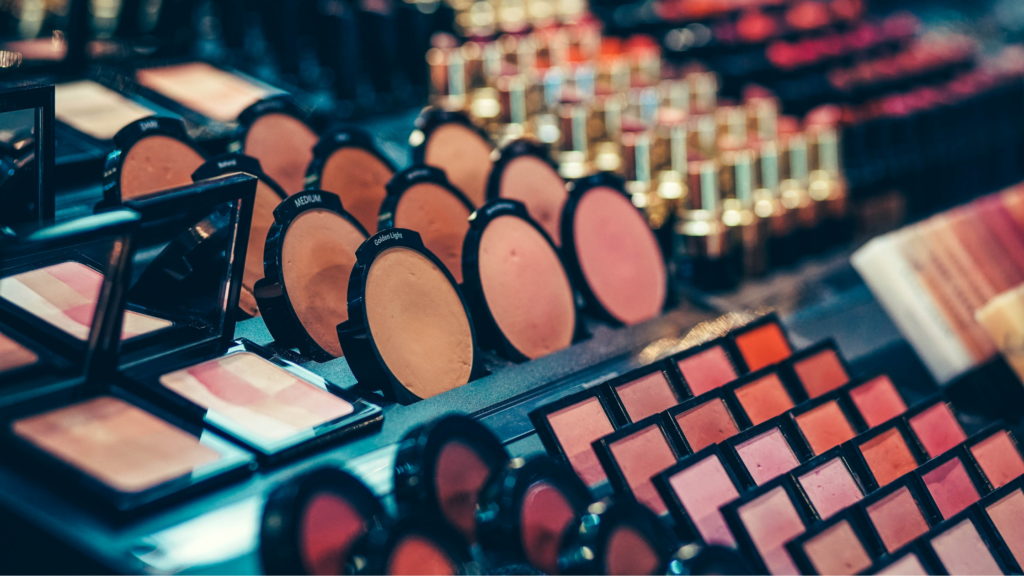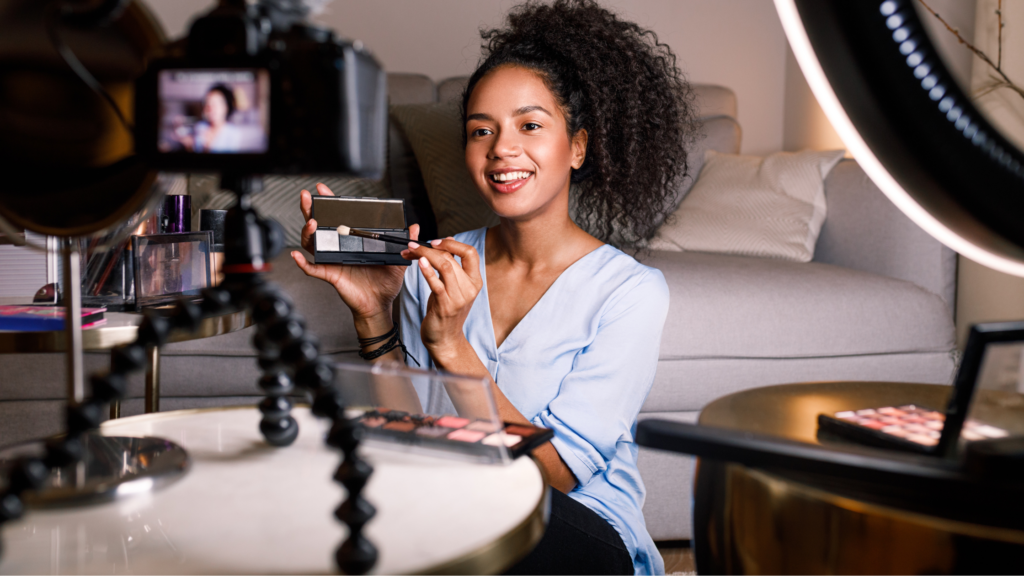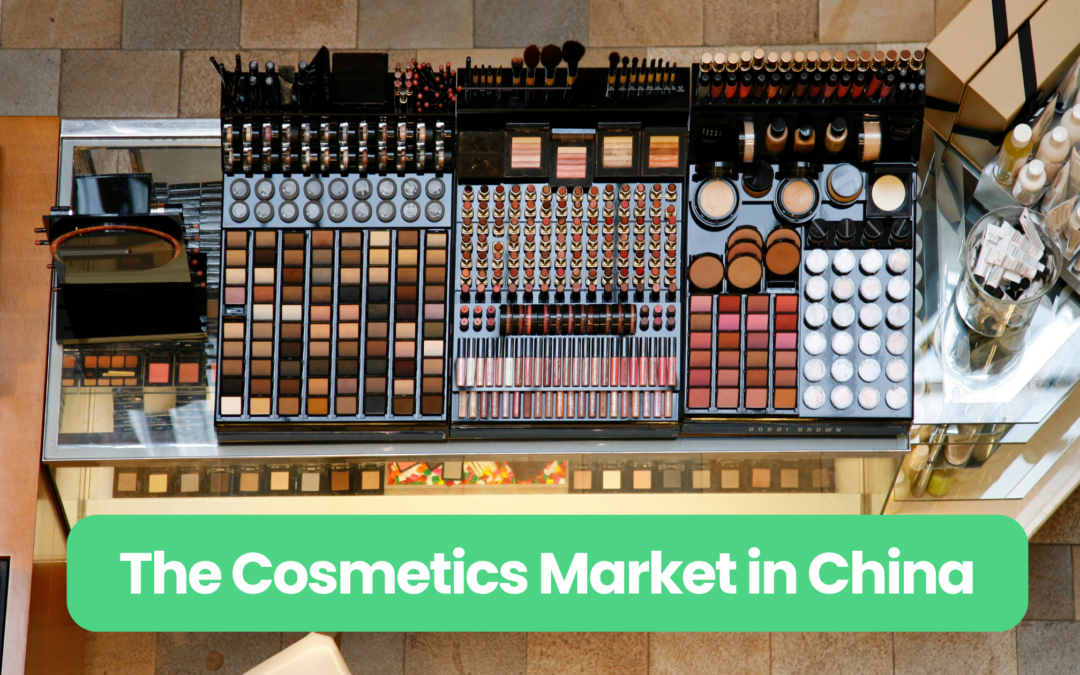In recent years, the cosmetics market in China has become one of the most attractive growth engines globally. According to data from Euromonitor International, by the end of 2023, annual sales in China’s cosmetics sector exceeded RMB 500 billion, with an average annual growth rate of 8% to 10% over the past five years. With its massive market size, expanding middle class, and increasingly sophisticated consumer mindset, China has become a strategic stronghold that international beauty brands cannot afford to ignore.
The Evolution of the Cosmetics Market in China
When it comes to product safety, Chinese consumers are no longer blindly influenced by advertising. Instead, they proactively educate themselves about skincare, analyze ingredients, and compare formulas. At the same time, brand image and cultural identity have become significantly more influential. Consumers are now willing to pay for “attitude” and are eager to build lasting relationships with brands that align with their personal values.
The widespread adoption of social media in China has also dramatically reshaped the traditional cosmetics purchase journey. KOLs (Key Opinion Leaders) and KOCs (Key Opinion Consumers) play an increasingly pivotal role in consumer decision-making. They are no longer just content creators, but also ambassadors of brand values and sources of trusted endorsement.
How to “Sell” Cosmetics in China
For international cosmetics brands aiming to gain a foothold in the cosmetics market in China, replicating strategies from other regions is no longer sufficient. Instead, success depends on a deep understanding of local platforms, consumer behavior, and the development of highly targeted localization strategies.
In the initial market entry phase, enhancing brand awareness in China is critical. Brands should prioritize establishing emotional resonance with local users through social media platforms, while conveying brand values via content channels such as online magazines. At the same time, e-commerce platforms should be leveraged to gradually drive sales conversions, creating a complete journey from awareness to purchase.

Chinese Social Media
On platforms like Weibo, Xiaohongshu, and Douyin, content that feels authentic, interactive, and personalized performs best. Brands should focus on answering the core question: “What do Chinese consumers really care about?” By delivering relatable content and maintaining continuous engagement, brands can foster long-term user loyalty and cultural alignment.
Xiaohongshu: A Natural Ground for the “Planting Grass” Culture
Xiaohongshu is a unique platform that integrates a content-driven community with e-commerce capabilities. It has become a vital space for young Chinese consumers to explore beauty trends and express their lifestyle preferences. Its core users are urban women aged 20 to 35 who care deeply about skincare ingredients, product experience, and—more importantly—the values and aesthetics conveyed by brands. These consumers are not just buying a product; they are investing in a lifestyle and identity that aligns with their personal values.
For international beauty brands, Xiaohongshu’s biggest strength lies not only in its selling power but in its robust content dissemination and community influence. Through diverse formats—such as image-and-text posts, short videos, and skincare diaries—brands can build authentic and relatable connections with users. The seamless integration of “topics, content, and commerce” allows users to move naturally from content discovery to purchase, significantly improving decision-making efficiency and brand trust.
In terms of content strategy, both KOCs and KOLs play crucial roles. KOCs share daily skincare routines and honest product experiences, offering credibility and relatability. KOLs, on the other hand, contribute more professionally styled content, enhancing brand image and content impact. Together, they create a multi-layered engagement framework that connects brands with consumers in meaningful ways.
Douyin: The Short-Video Powerhouse Driving Explosive Growth
Douyin has emerged as a critical platform for beauty brands looking to capture the attention of young Chinese consumers. Its primary users are urban women aged 18 to 30—open to new products and trends, and heavily influenced by short-form video content that delivers sensory appeal and emotional resonance. They seek not only efficacy and ingredient transparency but also want to see how a product performs in real-life scenarios.
Unlike traditional platforms, Douyin’s purchasing journey is entirely content-driven. Users are drawn in by engaging short videos while scrolling, which sparks interest and leads to spontaneous purchases. For brands, success on Douyin depends on creating eye-catching, story-driven content that captures attention within the first 15 seconds and compels users to act.
What sets Douyin apart is not just its vast traffic pool, but its “interest-based e-commerce” algorithm that delivers brand content directly to high-potential buyers. This content-matching mechanism lowers customer acquisition costs, increases ROI, and ensures sustained brand visibility.
In content execution, brands can leverage collaborations with influencers, livestreams, scene-based product demos, and user reviews to showcase their offerings. KOLs, with their expert positioning and broad reach, help establish brand authority and trust. KOCs, meanwhile, create a sense of authenticity and relatability through casual, lifestyle-focused content. Together, they provide a comprehensive content ecosystem with both influence and credibility.
Moreover, Douyin offers a suite of interactive tools—such as branded challenges, custom filters, and live co-hosting—which enhance user engagement. During peak campaigns, product launches, or festive promotions, these interactive features—amplified by platform-driven traffic—can quickly generate viral content and sales momentum, delivering both brand awareness and business growth in tandem.
An Expansion Project in China? We Can Help You!
Beauty Content Platforms and Online Magazines
On platforms such as Rayli, Meilishuo, OnlyLady, and VOGUE China—which function as online magazines or beauty-focused content hubs—brands can build authority and a premium image through featured columns, interviews, trend articles, and expert insights. These channels are particularly valuable for international beauty brands targeting China’s mid-to-high-end market or emphasizing professional efficacy and cultural storytelling.
Such content not only shapes the perception of expert audiences but also feeds back into the brand’s credibility on e-commerce and social platforms in China, enhancing trust and conversion potential across touchpoints.
E-commerce Platforms in China: More Than Sales Channels, They Are Branding Battlefields
Platforms like Tmall Global and JD Worldwide offer international beauty brands expansive digital retail access in China. However, these are not merely points of sale—they serve as key arenas for brand visibility and content communication.
To succeed, a brand’s flagship store must deliver a clear visual identity and coherent messaging. This should be supported by multi-layered content strategies, including video demonstrations, expert insights, and user reviews. Together, these elements create a closed-loop from “interest generation” to “purchase conversion,” positioning the brand not just as a product provider, but as a trusted beauty authority.
Tmall Global: The Go-To Platform for Cross-Border E-Commerce in China
As one of China’s most iconic cross-border B2C platforms, Tmall Global remains a top choice among high-end consumers. The platform attracts a significant user base with strong purchasing power and brand awareness—especially middle-class female consumers living in Tier 1 and emerging Tier 1 cities. These users typically have clear preferences and awareness regarding skincare philosophies and brand values.
For international beauty brands, entering Tmall Global is not only about unlocking a powerful sales channel—it also marks a strategic move in building brand visibility, consumer trust, and access to key promotional resources within the Chinese market.
JD Worldwide: A Trusted, Professional Channel Backed by Operational Excellence
Renowned for its highly efficient logistics, rigorous product vetting processes, and robust after-sales services, JD Worldwide has established a strong reputation among Chinese consumers as a trustworthy source for authentic products. In the beauty sector, the platform appeals to a large group of rational buyers—especially users over the age of 30—who place great emphasis on product quality, ingredient safety, and proven efficacy. These consumers also heavily rely on real user reviews as part of their purchase decision-making process.
To resonate with this audience, international beauty brands on JD Worldwide should focus on communicating credibility and expertise. Content strategies should include rich visual storytelling, clinical data, and expert commentary from dermatologists or formulators. Leveraging JD’s “direct sourcing” model ensures supply chain stability, while participating in campaigns like “JD Flash Sales” and “Super Category Days” can boost visibility and conversion. This approach helps brands cultivate long-term trust and influence among high-end, discerning consumers.

L’Oréal’s Marketing Success in the Cosmetics Market in China
L’Oréal China has achieved remarkable success by adopting a “platform-specific operations + targeted content strategy”, effectively driving both brand influence and sales performance in the Chinese market.
Precision Content Marketing: Cross-Platform Synergy on Xiaohongshu and Douyin
L’Oréal has excelled in leveraging Xiaohongshu and Douyin as key platforms for content-driven marketing. On Xiaohongshu, the brand focused on popular skincare ingredients such as Pro-Xylane and Niacinamide, partnering with KOLs and KOCs to publish authentic usage experiences and ingredient analyses. This triggered significant user engagement and amplified brand heat.
On Douyin, L’Oréal adopted short video storytelling and livestream commerce, successfully driving product visibility and conversions. A notable example is the L’Oréal “Purple Revitalift Eye Cream”, which achieved impressive sales results through targeted live broadcasts.
Tmall Double 11 Campaign: Data-Driven Content + Celebrity Power
L’Oréal actively utilizes Tmall’s user insight tools to tailor content and optimize product descriptions based on real-time consumer interest. During the 2021 Double 11 Shopping Festival, the brand launched a limited-edition customized ampoule set in collaboration with celebrity ambassador Gong Jun (chinese actor). By initiating pre-launch buzz on Weibo and Tmall, L’Oréal successfully captured the attention of Gen Z consumers, significantly increasing both product exposure and engagement. This dual strategy effectively strengthened L’Oréal’s appeal among younger demographics.
Scientific Backing and Professional Brand Building via Content Platforms
On professional beauty content platforms such as MeiLiXiuXing and OnlyLady, L’Oréal invests in educational content featuring detailed explanations of product ingredients and clinical efficacy. By integrating clinical trial data and dermatologist insights, the brand reinforces its professional authority and consumer trust.
Partner with STAiiRS: Unlock Growth in China’s Beauty Market
Whether you’re planning to enter this dynamic and high-potential market or aiming to optimize existing brand operations, STAiiRS offers professional, comprehensive, and agile go-to-market solutions tailored for international beauty brands. With deep local expertise and strategic resources, we empower your brand to seize market opportunities, accelerate visibility, and boost performance in the cosmetics market in China.


Recent Comments